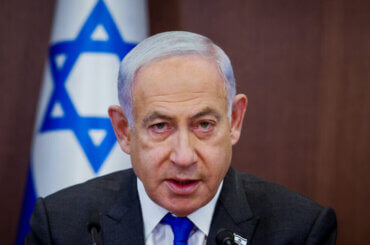It’s official: on Tuesday, the Israeli government gave the Simon Wiesenthal Center the go-ahead to begin digging the foundation of its so-called Museum of Tolerance, a name that would be ironic if Israel’s political discourse hadn’t become so mutilated that words like”tolerance” had simply stopped meaning anything. The museum is set to be built on the site of Jerusalem’s Mamilla cemetery, a storied Muslim burial ground that dates to the 7th Century. Already hundreds of graves have been dug up and desecrated to make room for the angled planes of the Tolerance center, and the museum’s construction crews are now free to build on thousands more.
The news that Israel’s Interior Ministry has approved the museum’s building plans was not unexpected but it is still devastating. It is the final defeat in nearly a decade’s worth of efforts by Palestinians, Israelis, academics, and human rights groups to stop the desecration. Or rather, it is the final nail in the coffin of a desperate bid to save a sacred piece of Palestinian history — before that coffin gets dug up and re-buried, that is.
The historical and religious importance of Mamilla cemetery (originally the Ma’man Allah cemetery) is well documented. Situated half a kilometer west of the Old City’s walls, the cemetery is reputed to contain the remains of some of Jerusalem’s oldest, most celebrated families as well as those of religious leaders, pilgrims, officers and soldiers of Saladin’s army, every-day Jerusalemites, and even companions of the Prophet Muhammad. In its graves lie the secrets and stories of centuries of Palestinian history, most if not all of which managed to survived Persian siege, Christian crusades, Ottoman conquest, and British rule. Indeed, it was only after west Jerusalem was absorbed into Israel in 1948 that the “indignities” began, as Rashid Khalidi explains in an elegant essay recently published in Jadaliyya. (Khalidi’s ancestors are, or at least were, among those buried in the Mamilla Cemetery, and he has been a leader of the Campaign to Preserve Mamilla Jerusalem Cemetery.)
Given various Israeli state agencies’ appropriation of religious holdings such as Mamilla, it goes without saying that such sites could not be protected, preserved or restored by the appropriate religious authorities. This is despite the fact that these authorities hold unassailable legal title to these properties, a title that the discriminatory legal system of the Israeli state does not recognize. Thus before sections of the cemetery were earlier turned into a parking lot, a park, or other profane purposes starting in the 1960s, they had been allowed to deteriorate significantly. This is what is currently happening to the remaining untouched area at the eastern end of the cemetery where numerous gravestones can still be seen. With the Muslim religious authorities forbidden from tending it, this remnant of the cemetery has become overgrown. Vandals have knocked down gravestones. The area came to be known as a seedy, disreputable, and dangerous place at night. The Jerusalem Municipality has repeatedly used earth-movers and other heavy equipment to remove both ancient grave markers and more recent ones restored by families or by private associations. The most recent episode of this sort took place on the night of June 25-26, 2011, when about 100 gravestones were destroyed by bulldozers.
I have now read these words several times, and each time I’ve been reminded — overpoweringly — of a pilgrimage I made two years ago to one of the only remaining Jewish cemeteries in Bialystok, Poland, birthplace of my grandfather and dozens of other relatives. The cemetery was deserted the day we visited and in bad disrepair. Of the original 40,000-50,000 headstones, all but 5,000 t0 7,000 had been destroyed or repurposed — which is to say, uprooted, stolen, and turned into building fodder for streets, homes, and other random objects of daily living. Of those that remained, many had been toppled, and several bore the fresh, spray-painted markings of swastikas. Litter from picnics strafed the grounds.
Compared to the death camps and mass graves we’d visited the previous days, the desecrated Bialystok cemetery barely rated on the horror scale. And yet, there was something in the desecration, so common in those parts of the world as to be almost de rigueur, that suggested a level of intolerance so profound that the only option was complete erasure. It wasn’t enough that a whole people and population had disappeared, they had to be redacted from history.
And now, of course, Israel is engaged in the same dance of intolerance, and once again we are reminded that the victim has become the victimizer, the desecrated has become the desecrator. And the vibrant history of a vital people is in danger of being lost. Which is, of course, the intent.

